Videos—Revelation: Pergamum

-
Pergamum: Asklepion
An Asklepion is a healing center, usually located around a fresh water spring whose waters were felt to have healing properties. The stream at Pergamum’s Asklepion still flows today. The ancient world had several famous healing centers, one of the most famous near Pergamum. One might today think of a modern health spa, with its mud baths, exercise routines, remedies, and health activities. The Asklepion even had a small theater (odeon) for cultural performances. Supplicants hoped to have a dream inspired by the god Asklepios in the overnight sleeping chambers that might reveal a remedy for their malady. The physician Galen, who attended gladiators and the emperor Marcus Aurelius, worked here at the Asklepion near Pergamum.
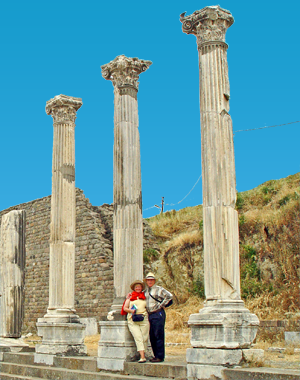
-
Pergamum: Acropolis
The already existing Hellenistic aqueduct system at Pergamum taught the Romans a unique siphoning technology to move water against gravity up to the acropolis, which had no natural spring.
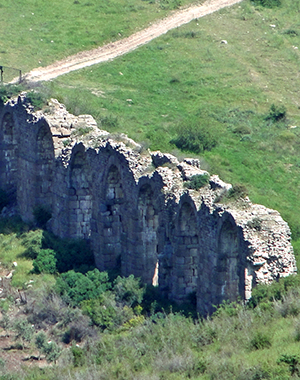
-
Pergamum: Temple of Trajan
When Attalus III died without an heir in 133 B.C., he bequeathed his kingdom to Rome. For a brief period, Pergamum was capital of the province of Asia, but this title later went to Ephesus. In the second century A.D., the city experienced a revival under several Roman emperors. Pergamum was granted the title of warden of the imperial temple, a highly coveted title among cities of the ancient world. Pergamum is a great illustration of the powerful influence of emperor worship in Asia Minor, which is important background for the seven churches in the book of Revelation, of which one letter was to the church at Pergamum. The only named martyr in the book of Revelation is Antipas of Pergamum (Rev. 2:13).

-
Pergamum: Great Altar of Zeus
Pergamum was center of a kingdom in Asia ruled by the Attalids in the second century B.C. The Attalid kings ruled wisely and intelligently, and their kingdom experienced a vibrant life of art, architecture, sculpture, and literature. Under Eumenes II, the great Altar to Zeus was constructed, universally considered the greatest monument of Hellenistic art from the ancient world. The theme of the reliefs around the altar base is the Gigantomachy, or Battle of the Olympian Gods and the Giants.
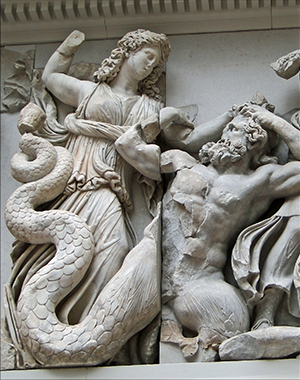
-
Pergamum: Theater
The dramatic Pergamum acropolis theater is at the heart of the ancient city, stunningly perched in a narrow semicircle on a steep hillside that overviews the entire western valley and the Asklepion healing center. The theater was constructed about 225–220 B.C. in the early Attalid period. The seating capacity was about 10,000 people. A case of vertigo is not uncommon for visitors as they exit out of the entrance ramp at the top of the theater.
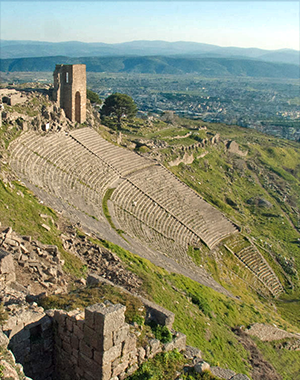
-
Pergamum: Imperial Inscriptions
The Roman emperor styled himself in imperial inscriptions as the “autokrator,” or “self powerful one” which is translated as “emperor” in these inscriptions. John exclusively describes God in Revelation as the “pantokrator,” or “all powerful one,” which is translated as "Almighty" in English translations. John’s title is one example of his intentional, anti-imperial rhetoric in Revelation.
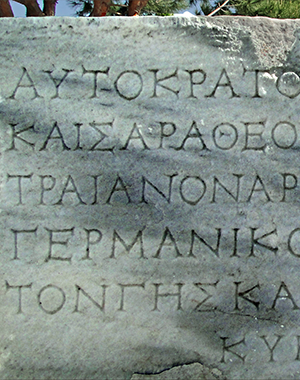
-
Pergamum: Roman House
Sadly, the Hellenistic and Roman homes in Pergamum are not well preserved. The House of Attalos, for example, is open to the elements and has deteriorated dramatically in the last few years. Its walled frescos are nearly totally lost. One exception to this dilapidation is a dwelling in what is called the “Z” building. Here, the stunning mosaics of a Roman home are preserved. The mosaics reveal a lifestyle focused on entertainment in the theater and gladiatorial combat.

-
Pergamum: Library
The library at Pergamum was established by king Eumenes II and rivaled the famous library at Alexandria. The library illustrates the focus on art, architecture, and culture that was a hallmark of the Attalid kingdom. Plutarch informs us that this library held 200,000 volumes. The use of parchment (leather) instead of papyrus (paper) as at Alexandria, was said to have been invented here at Pergamum in response to a ban on export of papyrus by Egyptian officials, rumored to have been instituted to stymie the efforts of Pergamum’s library.
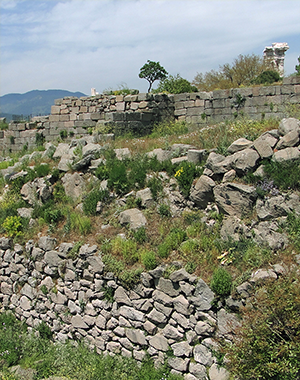
Videos > Videos-1MJ Videos-2MJ Videos-3MJ Videos-4JR Videos-Rev